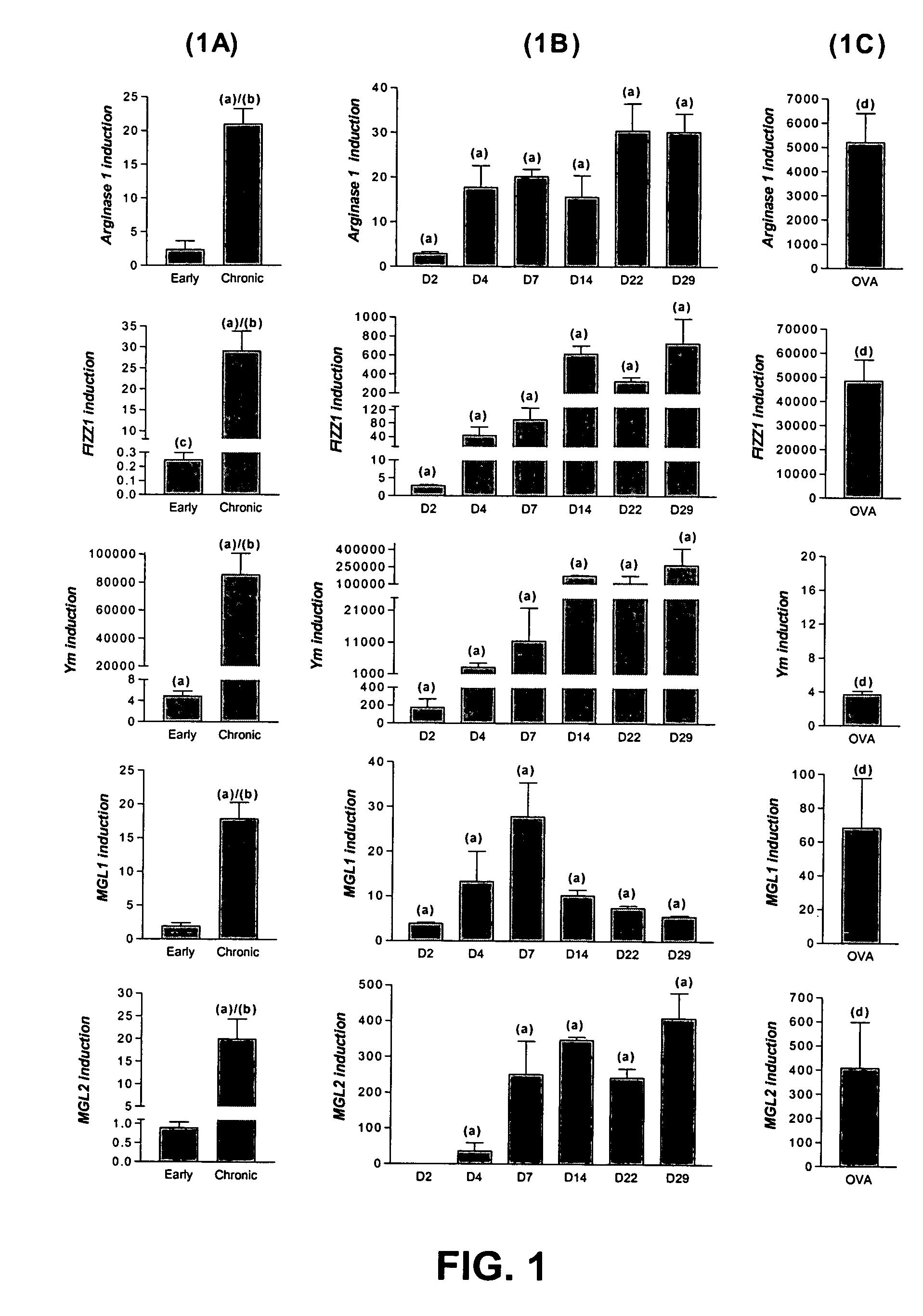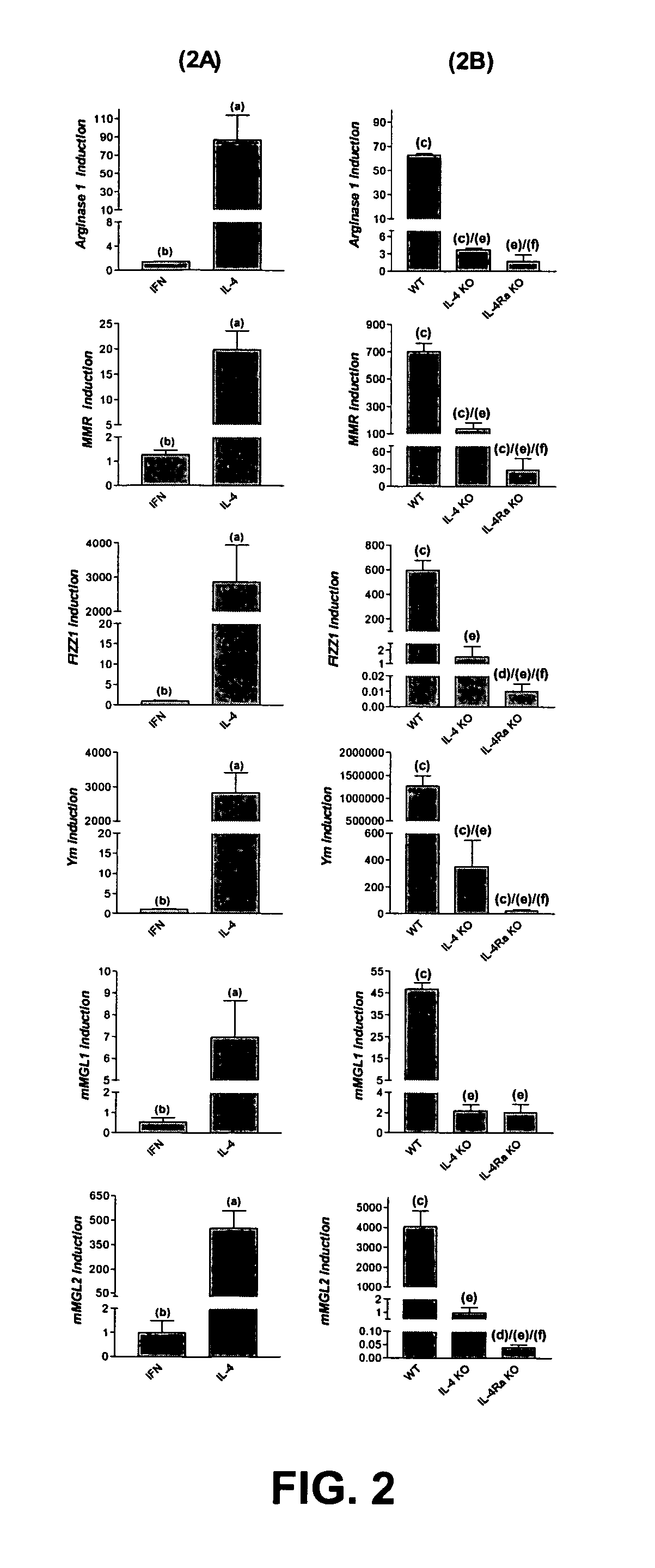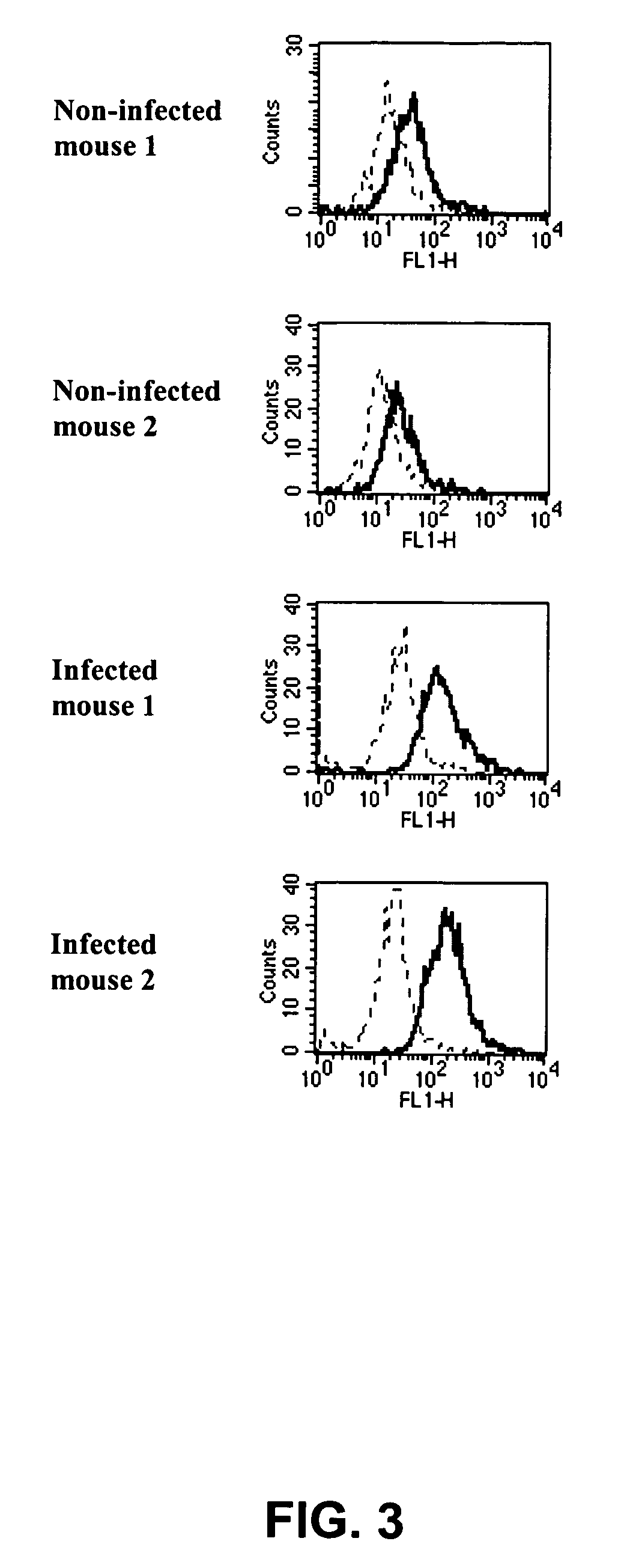Markers for alternatively activated macrophages
a technology of alternative activation and macrophages, applied in the field of biotechnology, can solve the problem that h3 may not be specific enough to allow sorting of the aamf fraction, and achieve the effect of promoting tumor growth
- Summary
- Abstract
- Description
- Claims
- Application Information
AI Technical Summary
Benefits of technology
Problems solved by technology
Method used
Image
Examples
example 1
Identification of MGL2 from the SSH Library
[0022]One of the clones picked up from the SSH library contained a fragment of MGL2, a recently identified macrophage C-type lectin with a high homology (91.5% amino acid identity) but a distinct carbohydrate specificity from the originally identified MGL, which has now been called MGL1 (Tsuiji et al., 2002). MGL(1) was found to be mainly restricted to macrophages in connective tissues (Imai et al., 1995) and to act as recognition molecule for glycosylated antigens on cancer cells (Ichii et al., 2000). Human MGL, for which so far one gene locus but several mRNA species, apparently derived from alternative splicing, were identified (Higashi et al., 2002), was shown to recognize Tn antigen, a carcinoma-associated epitope, consisting of a cluster of serine or threonine-linked N-acetylgalactosamine (Suzuki et al., 1996). Recent studies demonstrated that both human and mouse MGL are expressed by immature dendritic cells and are involved in the u...
example 2
MGL1 and MGL2 Expression in aaMF Elicited During PLC− / − T. b. brucei infection
[0023]To analyze the expression of MGL1 and MGL2 in caMF and aaMF, quantitative RT-PCR was first performed on RNA from peritoneal macrophages elicited via the PLC− / − T. b. brucei model used to generate the SSH library. In this model, correlating with a switch from a type I cytokine environment in the early stage of infection to a type II cytokine environment in the late and chronic phases, macrophages from early stage infected mice are caMF, while those from the late and chronic stages of infection are aaMF (Namangala et al., 2001). MGL1 and MGL2, similar to arginase 1, FIZZ1 and Ym, were found to be significantly induced in plastic-adherent peritoneal exudate cells (PECs) from chronic stage PLC− / − T. b. brucei-infected F1 mice (aaMF) as compared to early stage infected (caMF) or non-infected mice (FIG. 1, Column 1A). Similar results were obtained in peritoneal macrophages purified from PECs via FACS sorti...
example 3
Distinct Kinetics of MGL1 and MGL2 Modulation during Taenia crassiceps Infections
[0024]Infections with Helminths such as Taenia crassiceps are characterized by a gradual progression to polarized type II immune responses and the generation of aaMF (Rodriguez-Sosa et al., 2002). As shown in FIG. 1, Column 1B, the pattern of MGL2 induction in peritoneal macrophages during infection with T. crassiceps is similar to arginase 1, FIZZ1 and Ym, with a gradual increase in expression until a plateau is reached a few weeks after inoculation. Although MGL1 is also induced during T. crassiceps infection, its induction level as compared to non-infected animals never reaches the several 100-fold observed for MGL2 and the pattern of induction is quite distinct: a gradual increase in the first week of infection, after which the induction level falls back to five- to ten-fold. These differences suggest MGL1 and MGL2 may exert distinct functions in vivo.
PUM
| Property | Measurement | Unit |
|---|---|---|
| antibiotic resistance | aaaaa | aaaaa |
| cell surface | aaaaa | aaaaa |
| fluorescence intensity | aaaaa | aaaaa |
Abstract
Description
Claims
Application Information
 Login to View More
Login to View More - R&D
- Intellectual Property
- Life Sciences
- Materials
- Tech Scout
- Unparalleled Data Quality
- Higher Quality Content
- 60% Fewer Hallucinations
Browse by: Latest US Patents, China's latest patents, Technical Efficacy Thesaurus, Application Domain, Technology Topic, Popular Technical Reports.
© 2025 PatSnap. All rights reserved.Legal|Privacy policy|Modern Slavery Act Transparency Statement|Sitemap|About US| Contact US: help@patsnap.com



